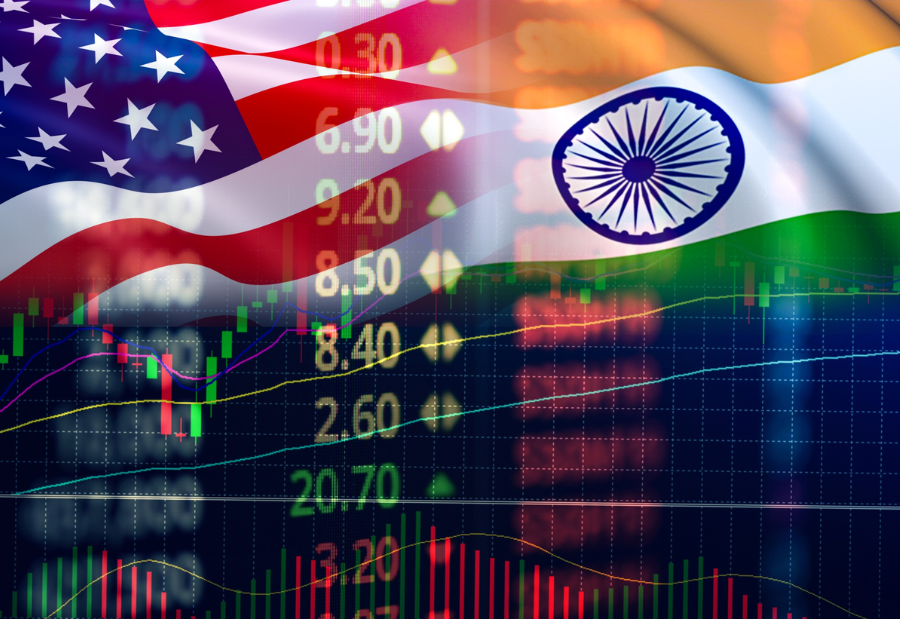In the rapidly evolving global trade landscape, India’s Banking, Financial Services, and Insurance (BFSI) and fintech sectors stand at a critical crossroads. Recent U.S. tariff announcements and policy changes, including sharp increases in tariffs on certain Indian exports and hikes in H-1B visa fees, have sent ripples across markets and industries worldwide. These developments, along with the lingering effects of geopolitical tensions and shifting trade alliances, pose unique challenges and opportunities for India’s financial ecosystem.
As the U.S. remains India’s largest export destination, accounting for nearly 20 per cent of its total exports, understanding how these policy shifts might impact BFSI and fintech is vital for stakeholders, investors, and policymakers alike.
The Context: U.S. Tariffs and Policy Changes
The U.S. government’s recent decision to impose a 100 per cent tariff on branded and patented pharmaceutical products marks a significant shift in trade policy. While Indian generic drug manufacturers have largely escaped direct impact, the broader pharmaceutical and healthcare sectors (key BFSI clients) now face heightened uncertainty. Moreover, hikes in H-1B visa fees and changes in immigration rules are adding another layer of complexity, influencing talent mobility and operational costs for Indian IT and fintech firms servicing U.S. clients.
These policy measures come at a time when global supply chains are still recovering from the pandemic’s aftershocks, and trade tensions remain volatile. For India’s BFSI and fintech sectors, which heavily rely on cross-border transactions and collaborations, the implications could be profound.
Impact on BFSI and Fintech: What to Expect
Trade and Export Challenges
The tariff hikes primarily threaten Indian pharmaceutical exports but may have a domino effect on BFSI firms linked to these industries. Financial institutions with exposure to sectors affected by tariffs, such as textiles, chemicals, and manufacturing, could face increased credit risk as their clients experience revenue pressures. This could lead to a cautious tightening of credit, affecting fintech companies that serve as intermediaries or provide digital lending services to these sectors.
Currency Volatility and Investor Sentiment
The Indian rupee’s depreciation to historic lows against the U.S. dollar, partly triggered by tariff-related anxieties and visa fee hikes, presents a double-edged sword. While a weaker rupee can boost exports, it also raises the cost of dollar-denominated debt and dampens foreign direct investment sentiment. Fintech startups, many of which depend on foreign capital, may find fundraising more challenging amid this uncertainty, potentially slowing innovation and growth.
Operational Pressures and Strategic Shifts
Indian IT firms, including those offering fintech solutions, face operational hurdles as tariffs and policy changes drive U.S. clients to reconsider outsourcing models. Increased costs and renegotiations could reduce project scopes, delay digital transformation initiatives, and force companies to diversify markets or invest more heavily in U.S.-based operations. Such strategic moves, while costly in the short term, may ultimately help Indian fintech firms align better with evolving trade norms and maintain market access.
Long-Term Outlook and Opportunities
Despite immediate challenges, the BFSI and fintech sectors have the resilience and innovation capacity to adapt. Prolonged tariff-related pressures could encourage greater diversification of client portfolios, increased focus on domestic markets, and acceleration of product innovation tailored to changing customer needs.
Additionally, government initiatives supporting digital payments, financial inclusion, and fintech innovation could help mitigate some negative effects of trade disruptions. Collaboration between policymakers and industry leaders will be crucial to navigate this complex environment and leverage emerging opportunities.
Final thoughts
Recent U.S. tariff hikes and policy changes represent a turning point for India’s BFSI and fintech sectors. While risks related to export disruption, currency volatility, and operational costs are significant, proactive strategies and adaptive business models can help these sectors thrive.
For investors and stakeholders, closely monitoring trade policies and geopolitical developments is more important than ever. The ability to anticipate change and innovate will define the future of India’s financial services landscape in this new global trade era.
Also read: Viksit Workforce for a Viksit Bharat
Do Follow: The Mainstream formerly known as CIO News LinkedIn Account | The Mainstream formerly known as CIO News Facebook | The Mainstream formerly known as CIO News Youtube | The Mainstream formerly known as CIO News Twitter |The Mainstream formerly known as CIO News Whatsapp Channel | The Mainstream formerly known as CIO News Instagram
About us:
The Mainstream formerly known as CIO News is a premier platform dedicated to delivering latest news, updates, and insights from the tech industry. With its strong foundation of intellectual property and thought leadership, the platform is well-positioned to stay ahead of the curve and lead conversations about how technology shapes our world. From its early days as CIO News to its rebranding as The Mainstream on November 28, 2024, it has been expanding its global reach, targeting key markets in the Middle East & Africa, ASEAN, the USA, and the UK. The Mainstream is a vision to put technology at the center of every conversation, inspiring professionals and organizations to embrace the future of tech.




